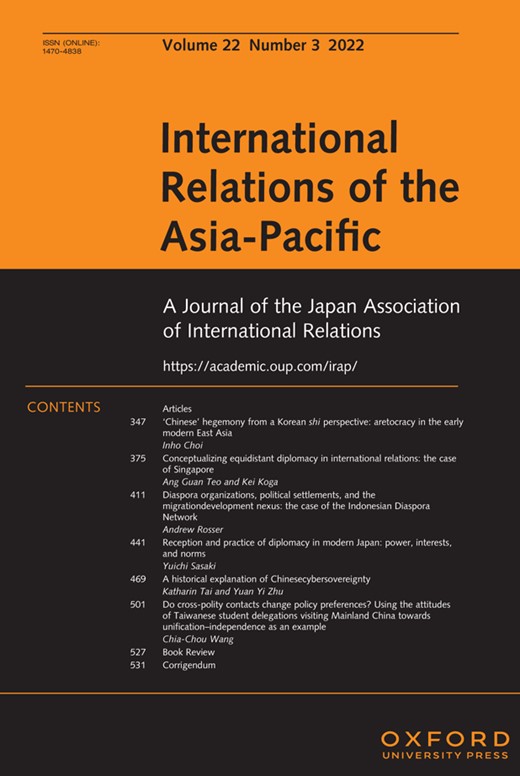-
Views
-
Cite
Cite
Ang Guan Teo, Kei Koga, Conceptualizing equidistant diplomacy in international relations: the case of Singapore, International Relations of the Asia-Pacific, Volume 22, Issue 3, September 2022, Pages 375–409, https://doi.org/10.1093/irap/lcab011
Close - Share Icon Share
Abstract
How can we systematically conceptualize equidistant diplomacy? This article argues that while ‘equidistant diplomacy’ has its own tactical utility to signal and shape a state’s image of political neutrality to the target states, it is not indicative of the state strategy. This is because state strategy is generally determined by material capabilities and is categorized as balancing, bandwagoning, and hedging. Rather, equidistant diplomacy is perception managementmerely an independent diplomatic tactic aimed at signaling a neutral image through three main tools: paralleling, downplaying, and broadcasting. This diplomatic tactic is most likely to be part of ‘hedging’ behavior. However, states can similarly employ equidistant diplomacy for balancing or bandwagoning if they desire to project a neutral image and their target states do not force them to alter this tactic with diplomatic or material sanctions. With this conceptual framework, Singapore’s diplomatic behavior vis-a-vis the United States and China from the 1990s will be examined.



